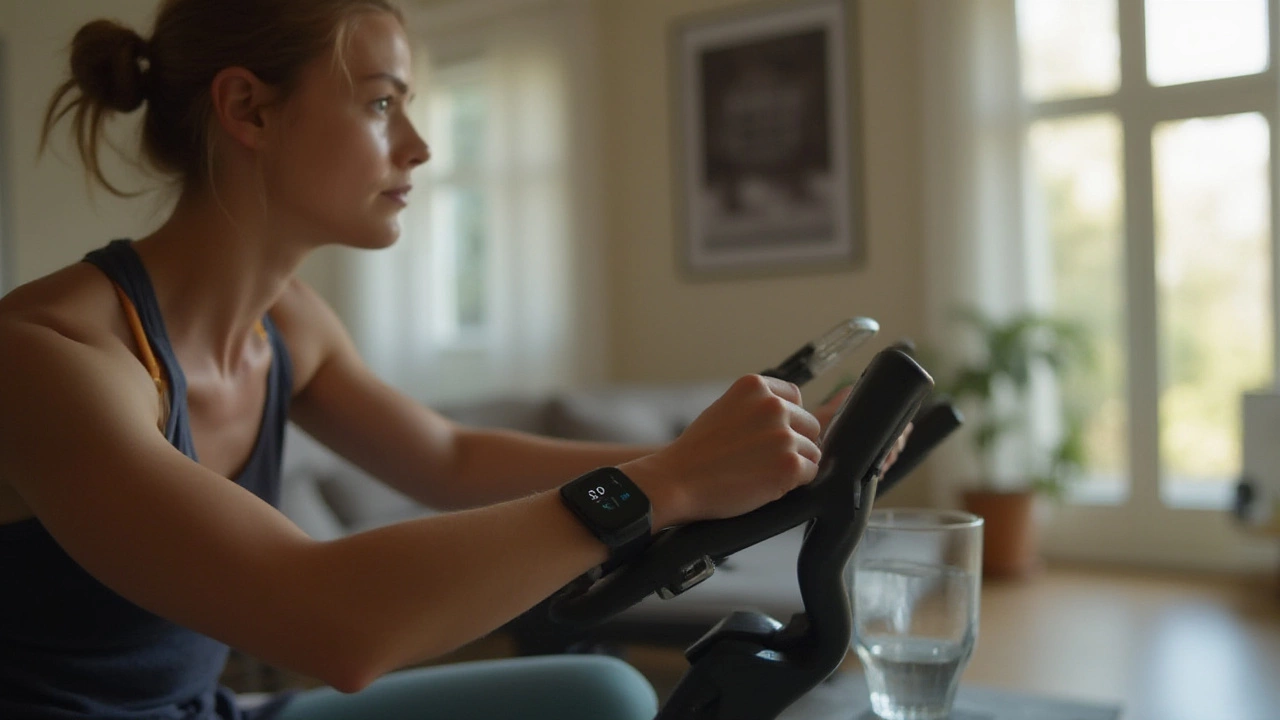
You see the ads promising a slimmer body just by running or hopping on a bike. Sounds tempting, right? But real weight loss isn't just about sweating buckets for hours. There's something almost everyone gets wrong: you can't out-cardio a bad diet, no matter how hard you try. Yet, cardio can play a major role in shedding those stubborn 20 pounds—if you know how to use it right.
How Cardio Impacts Your 20-Pound Weight Loss Goal
Cardio burns calories, plain and simple. Every step, every jump, each time your heart pounds is your body using energy. To lose 20 pounds, you need a calorie deficit—burning more calories than you take in. One pound of fat equals roughly 3,500 calories. So, dropping 20 pounds means torching 70,000 calories more than you eat over time. Does that mean endless treadmill marathons? Not necessarily.
Studies published by the American College of Sports Medicine show that moderate-to-vigorous cardio workouts burn about 7 to 15 calories per minute, depending on your weight and how hard you’re working. For a 150-pound person, jogging at a steady pace burns around 300 calories in 30 minutes. Cycling at a fast clip or doing interval workouts can ramp it up even more. Some folks love running, others prefer dancing, rowing, swimming, or hitting the elliptical. The key is consistency and intensity.
But here's the kicker: the body adapts. You might burn more at first, but as you get fitter, the same workout burns fewer calories. That’s why so many people hit a "plateau" after a few weeks. Plus, your body tries to protect its weight by making you hungrier post-exercise. Ever crave fries after a hard spin class? You’re not alone. Eating back all those burned calories can quietly sabotage your progress.
This is why pure cardio alone, without diet change, usually leads to slower weight loss. A widely cited study in the journal Obesity suggests most people lose less than half the weight they expect from exercise alone thanks to compensation (think: extra snacks). People often underestimate what they eat and overestimate how much they burn. Apps and fitness trackers aren’t perfect either—they often inflate calorie-burn numbers, making it easy to overindulge later.
But don’t throw in the towel! There’s a smarter way to do this. Cardio is part of the picture, not the whole canvas. Combine it with diet tweaks, and suddenly that 20-pound goal looks way less intimidating.

Making Cardio Work for Your Body (and Your Schedule)
Before you lace up your sneakers and sprint headlong into a routine, consider what you'll actually stick to. The best kind of cardio is the one you won't dread—and ideally, the one you might even enjoy. For some, that means brisk walking while listening to true crime podcasts. For others, it’s swimming laps under water or chasing a soccer ball with friends.
A lot of experts recommend 150-300 minutes a week of moderate-intensity activity for weight loss. Break that down: that's 30-60 minutes a day, most days of the week. If you’re short on time, bump up the intensity. High-intensity interval training (HIIT) packs a punch. In just 20-30 minutes, you can torch calories and spark your metabolism for hours after. Tabata, hill sprints, jump rope intervals—these work wonders when life gets busy.
Here’s something a lot of people miss: mixing it up is good for your body and your motivation. If you’re bored, you’ll quit. Try circuit classes, dance fitness, hiking, or go old-school with jump rope and playground workouts. The more muscles you use, the greater the calorie burn. Full-body moves like burpees or mountain climbers get your heart—and every part of you—working hard.
Let’s talk about "cardio zones." Fitness folks love to geek out about heart rate zones, but for simple fat loss, you want to be breathing hard enough to talk, but not sing. On a scale of 1 to 10, aim for a 6 or 7 most days, and push it to an 8 or 9 with intervals once or twice a week.
Want the nitty-gritty on calories burned? Here’s a quick cheat sheet based on a 155-pound person working for 30 minutes:
| Cardio Activity | Calories Burned (30 min) |
|---|---|
| Running (6 mph) | 372 |
| Cycling (vigorous) | 446 |
| Swimming (fast) | 372 |
| Jump rope | 372 |
| Rowing (moderate) | 260 |
| Step aerobics | 298 |
| Brisk walking | 149 |
You don’t have to stick to just one exercise. Try combining a few to keep things fresh—and challenge your body in new ways.
Another smart tip: add a little strength work. Yes, this is about cardio, but building muscle boosts your metabolism so you burn more calories even at rest. Muscle is like a secret calorie furnace. Even two 20-minute sessions a week can make a big difference without turning you into a bodybuilder.
Watch out for common mistakes. Exercising on an empty stomach doesn’t magically melt fat faster. Hours of cardio won’t erase what happens in the kitchen. And if you’re injured or burned out, you’ll move less—hurting results long-term. Listen to your body and choose activities you can sustain over weeks and months, not just days.

Making 20-Pound Weight Loss Stick: Combining Cardio with Smart Choices
You can lose 20 pounds with cardio—but it isn’t a solo show. Think of cardio as your lead singer, not the whole band. If diet, sleep, and stress management are off-key, everything else suffers. That’s where the magic really happens: synergy.
Start with honest tracking. Record your food for a week. Be real—sauces, handfuls of chips, sips of juice, all of it. Most people are shocked by what they discover. Cutting just 250 calories a day (like skipping sugary drinks) and burning 250 with exercise puts you at the sweet spot: a 500-calorie daily deficit. That comes out to about one pound lost per week, or 20 pounds in five months. Sustainable, realistic—and still lets you have pizza once in a while.
Hydration helps. Drinking enough water (aim for half your bodyweight in ounces daily) can boost energy, fill you up, and keep cravings in check. Many times, that rumbling belly is just thirst in disguise. Sleep matters too—less sleep means more hunger, cravings, and stress, all of which make you more likely to eat extra and less likely to work out.
Sneak movement into your routine. Daily walks, taking stairs, short "deskercise" breaks—these add up big time. Small stuff like carrying groceries, cleaning, or chasing your pet counts. It’s called NEAT (non-exercise activity thermogenesis), and research in Mayo Clinic Proceedings found it can burn up to 2,000 extra calories per day in highly active folks. It’s your not-so-secret weapon for weight loss, alongside deliberate cardio workouts.
Social support helps more than you think. Sweat with a friend, join a running group, or plug into an online fitness community. You’re much more likely to stick with a plan—especially when motivation dips or plateaus hit, and they will.
Set mini-goals and celebrate progress along the way. Dropped your time on a mile? Nailed a week of healthy lunches? That’s a win. These little victories keep you engaged, and confidence grows with each one. Don’t obsess over the scale—it fluctuates for a million reasons. Measure progress by how you feel, how your clothes fit, and your energy.
Here’s the straight talk: cardio can help you lose 20 pounds, but only when you play it smart. It’s the steady effort, the little choices, and genuinely enjoying movement that get you there—and keep the weight off. There's no shortcut, but there’s power in knowing what works and doing it with intention. So if you’re wondering if you can lose 20 pounds with cardio? Yes, but don’t forget all the tools in your toolbox. And try to have a little fun with it—or at least some catchy music in your earbuds while you work for it.
